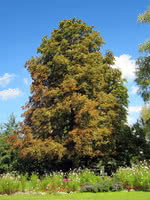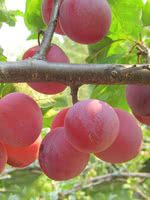Mon-Fri 9am - 5pm Mountain time
Horse Chestnut vs Pembina Plum
Aesculus hippocastanum
Prunus nigra x salicina Pembina
CUSTOM GROW
Horse Chestnut is a medium sized deciduous tree that is native to Greece but has been grown in North America for hundreds of years. It produces large nuts.
A top CO2 absorbing species. Experts think this tree may help climate change more than others.
Pembina Plum is one of the best-tasting plums that can be planted on the prairies. It is semi-freestone with orange flesh that is soft, juicy, and sweet which contrasts with the thick, sour, dark red skin. The plums can grow up to 5 cm in diameter and are well-suited for fresh eating, baking, and preserves.
They typically ripen in mid to late August and should be picked as soon as they are ripe. If left too long, the fruit will fall off the tree.
Pembina Plum is a hybrid between Canada Plum and Japanese Plum. For fruit production, it needs to be planted with another variety for cross-pollination. Canada Plum and American Plum are considered universal pollinizers.
Horse Chestnut Quick Facts
Pembina Plum Quick Facts
Toxicity: most parts of plant are toxic

